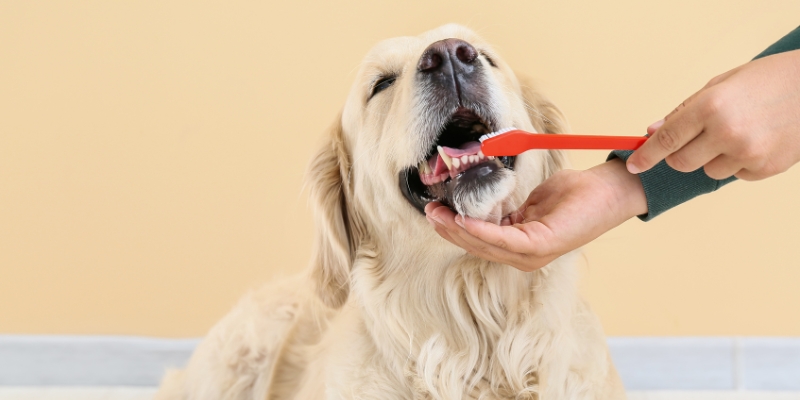Dental health duties
Whilst most owners understand the impact of their pet’s oral health on their general health and quality of life, many may still need clarification on the practical ways to achieve excellent pet dental hygiene.
After all, it’s not just a matter of handing your pet a toothbrush and setting a two-minute timer!
Here are some of the best ways to keep your pet’s mouth fresh, clean and healthy!
1. Veterinary dental care
We recommend dental check-ups for every pet every 6-12 months. Why so frequently? Because:
- You’re likely not brushing and checking your pet’s teeth twice a day as you would for yourself – this means that dental disease will develop rapidly, with plaque (gooey, bacteria-containing film) accumulating on your pet’s teeth within a few hours of a meal and starting to harden into calculus within 24-48 hours!
- Early dental disease is reversible with a proper veterinary scale and polish (professional cleaning)
- If your pet has any painful teeth, we can spot them sooner and perform prompt treatment to spare them long-term pain and infection
- When we perform a dental check-up, we can also check your pet for any other potential health issues (such as lumps in their mouth) and advise on general proactive health care measures such as vaccinations, parasite control, healthy weight maintenance and joint support
If we spot dental disease in your pet, we’ll recommend a dental procedure performed under anaesthetic – this will minimise your pet’s discomfort and stress and allow the most thorough examination.
Depending on your pet’s degree of oral disease, they may require anything from just a scale and polish to more serious interventions such as tooth extractions. Rest assured that for any extractions, your pet will receive multiple types of pain relief during and after the procedure to facilitate a comfortable recovery.
2. Home dental care
We recommend regular home dental hygiene measures that slow the development of gingivitis and periodontitis (inflammation around the gums and tooth roots) in your pet.
The most effective means of keeping teeth clean is mechanical abrasion, a.k.a. brushing! If your pet is good-natured, consult our team on how to gradually train them to accept brushing. You can start by using a very soft toothbrush with water or a pet-safe toothpaste. We recommend daily 30-60 second brushing sessions, starting with a soft face flannel wrapped over your finger and frequently offering your pet small, tasty treats for bribery.
Once your pet accepts flannel brushing (usually after a week or two of training), you can gradually introduce a soft toothbrush. It’s essential to ensure that your pet has no gum redness or loose teeth before brush training. Otherwise, they will be uncomfortable and naturally resistant to the process.
If daily brushing isn’t possible, we strongly recommend using a prescription dental diet, which will provide some cleaning action.
Additionally, our team recommends the use of safe dental hygiene aids, and VOHC (Veterinary Oral Health Council) approved dental chews such as:
- Veggie ears
- Prozym dental sticks
- Orovet
- Greenies
For more personalized dental health care advice for your pet, consult our knowledgeable vets!

